PROTECT YOUR DNA WITH QUANTUM TECHNOLOGY
Orgo-Life the new way to the future Advertising by AdpathwayIf you’re wondering how you can attract hummingbirds to your garden oasis, look no further. Here are 20 flowers you can plant that have bright colors, high-quality nectar, tubular-shaped flowers, and other features that will entice the charming flappers to your yard. Read on to learn more about 20
Bee Balm
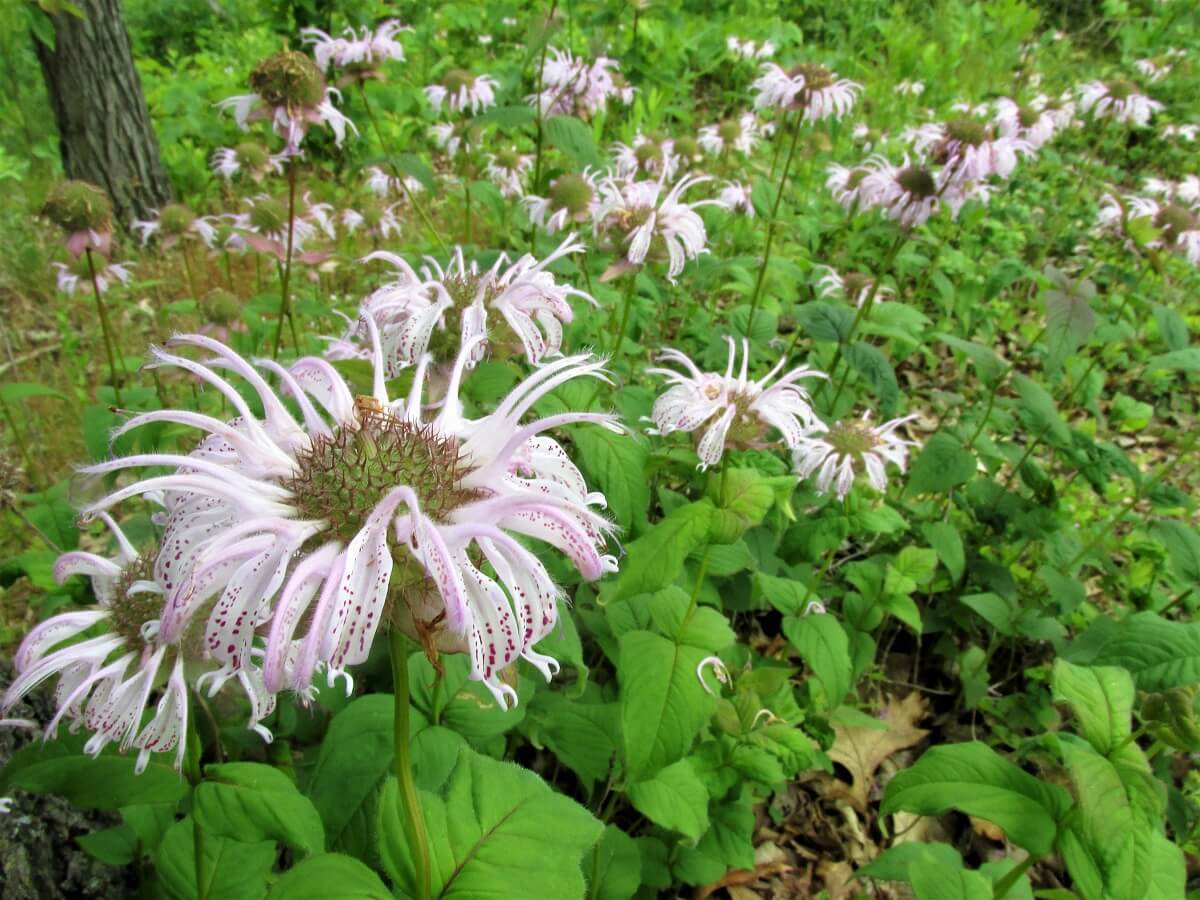 Wren Everett / Insteading
Wren Everett / Insteading- USDA Zone: 4-9
- Bloom time: Midsummer to September
These flowers that attract hummingbirds appeal to other pollinators, as well. Bee balm grows well in full sun, though it can tolerate some shade.
Related Post: Bee Balms or Bee Bums?
Soil should drain adequately, but Bee balm tolerates poor soils reasonably well. Bee balm is drought tolerant.
Catmint
- USDA Zone: 4-8
- Bloom time: Spring and summer
Also known as catnip, this herb grows to about 24 inches tall. Catmint requires full sun to partial shade and needs to be watered when the soil dries out. Grow Catmint in well-drained soil with a pH between 6.0 and 6.6.
Iris
- USDA Zone: 4-9
- Bloom time: Summer
These pretty flowers that attract hummingbirds are available in a wide array of varieties. There are more than 300 species of this plant. Iris prefer full sun and requires regular watering and can be grown in neutral soil, though it prefers slightly acidic soil.
Petunia
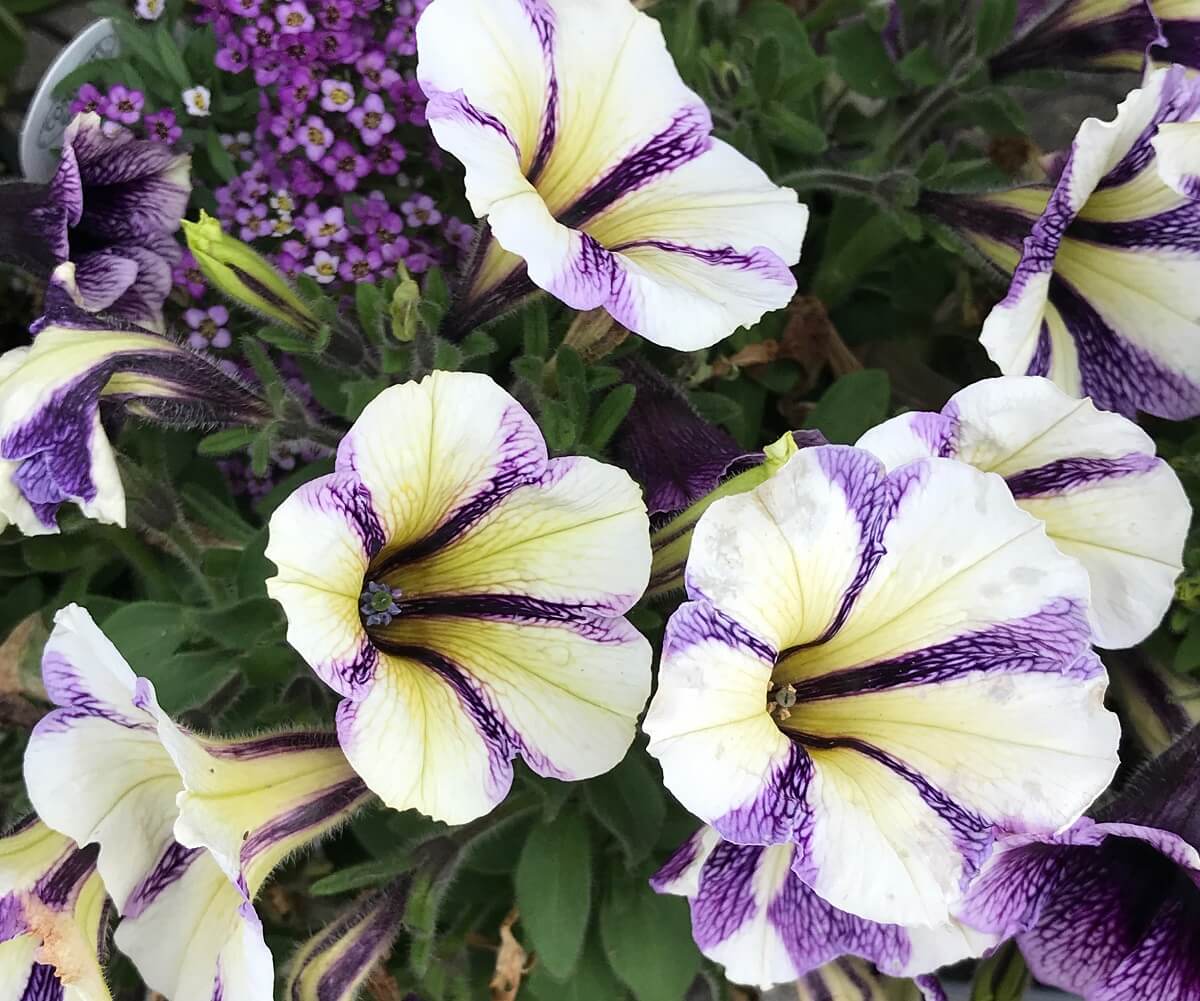 Leigha Staffenhagen / Insteading
Leigha Staffenhagen / Insteading- USDA Zone: Annual
- Bloom time: Spring and summer
Popular flower for front landscaping that have trumpet-shaped blooms perfect for hummingbirds. Petunias tolerate a variety of soils, though they’ll do best with a pH of 6.0 to 7.5. Avoid prolonged periods of drought and plant Petunias in full sun.
Dahlias
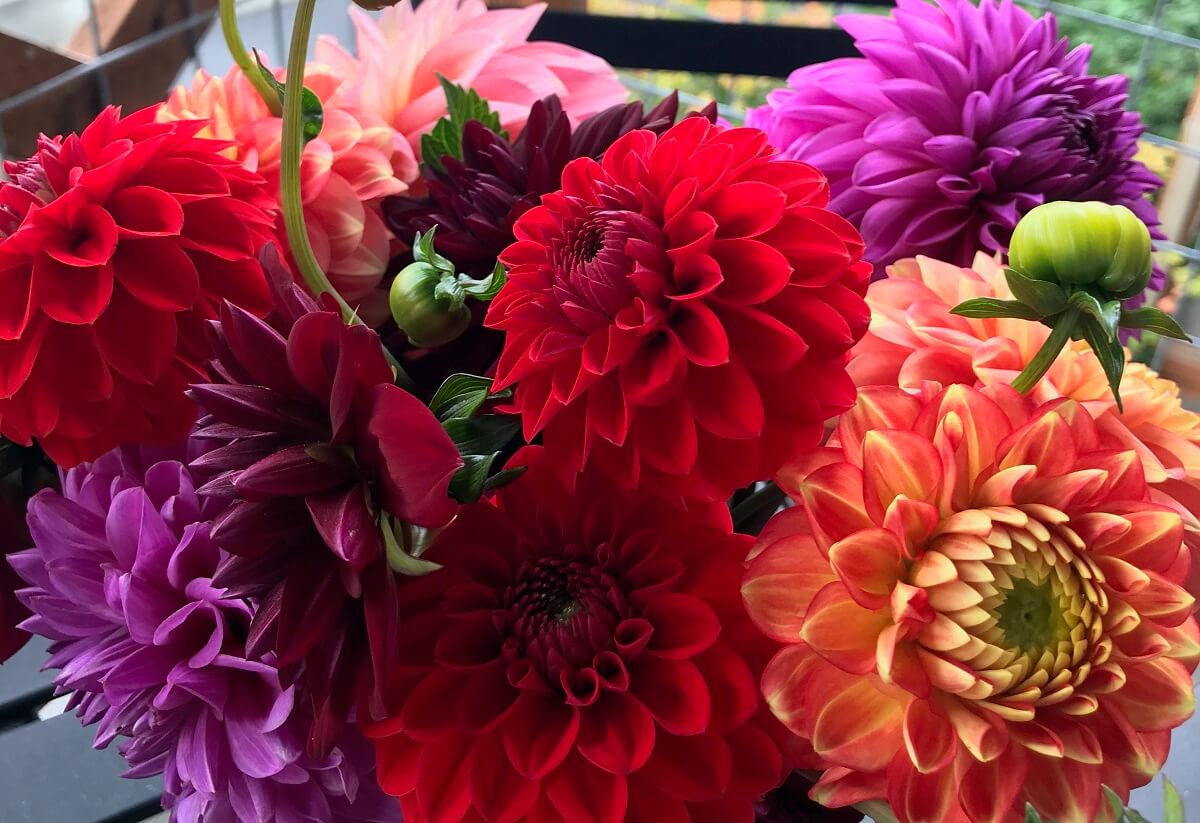 Leigha Staffenhagen / Insteading
Leigha Staffenhagen / Insteading- USDA Zone: 8-11
- Bloom time: Summer until frost
One of my new favorite flowers that attract hummingbirds, I planted Dahlias this summer, and it seemed they never stopped blooming. The intricate blooms are a sight to see. Dahlias require full sun and well-drained soil, and they need to be watered well in the heat.
Gladiolus
- USDA Zone: 8+
- Bloom time: July until frost
A gorgeous addition to flower arrangements, gladiolus flowers attract hummingbirds thanks to their trumpet-shaped blooms. Gladiolus requires full sun and well-draining soil. Avoid overwatering to prevent root rot.
Nasturtium
 Leigha Staffenhagen / Insteading
Leigha Staffenhagen / Insteading- USDA Zone: 9-11
- Bloom time: Depends on climate (may not do well in heat)
A delicate, easy-to-grow edible flower available in a variety of hues, Nasturtiums tolerate most types of soil and regular watering. Plant Nasturtiums in full sun to partial shade with shade being preferred in sweltering conditions.
Zinnias
 Leigha Staffenhagen / Insteading
Leigha Staffenhagen / Insteading- USDA Zone: Annual
- Bloom time: All summer until frost
I grow Zinnias every single year without fail. They’re one of my absolute favorite cut flowers. It’s no wonder that hummingbirds like these attractive, vibrant-colored blooms.
Related Post: Homestead Stories: A Colorful Zinnia Extravaganza
Plant them in well-amended soil with a pH between 5.5 and 7.5. Zinnias require full sun and need to be watered regularly.
Sage
- USDA Zone: Depends on the variety
- Bloom time: Depends on the variety
Sage has an intoxicating scent and attracts all sorts of beneficial insects and creatures to the garden. There is a choice of many varieties. Sage typically does best in full sun, and is drought tolerant. Adequate drainage is required.
Impatiens
- USDA Zone: Annual (reseeds readily in zones 9-11)
- Bloom time: Spring and summer
Brightly colored flowers perfect for gardeners with shadier spaces still wanting to attract hummingbirds. Impatiens prefer shade conditions, well-draining, fertile soil, and frequent watering.
Lilies
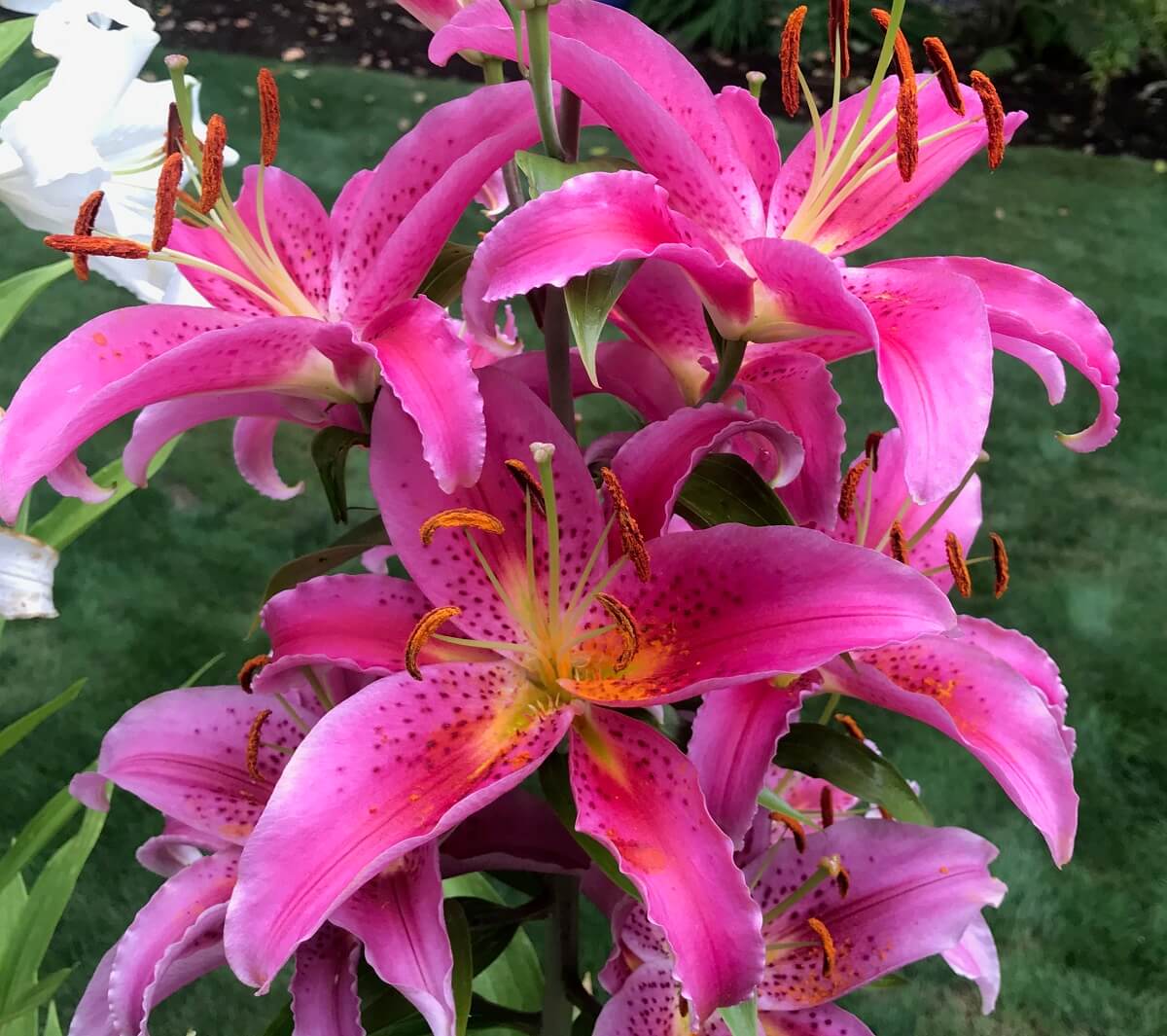 Leigha Staffenhagen / Insteading
Leigha Staffenhagen / Insteading- USDA Zone: Depends on the variety
- Bloom time: Depends on variety, many lilies begin blooming in spring
Fragrant flowers often featured in bouquets, these tall plants make quite the addition to any garden. Lilies need full sun, acidic, well-draining soil, and frequent watering.
Red Salvia
- USDA Zone: 10-11
- Bloom time: Summer
Red Salvia features scarlet flowers that are attractive to hummingbirds. Their strong scent is a notable pest repellent. Red Salvia is drought tolerant and needs full sun and well-drained soil.
Penstemon
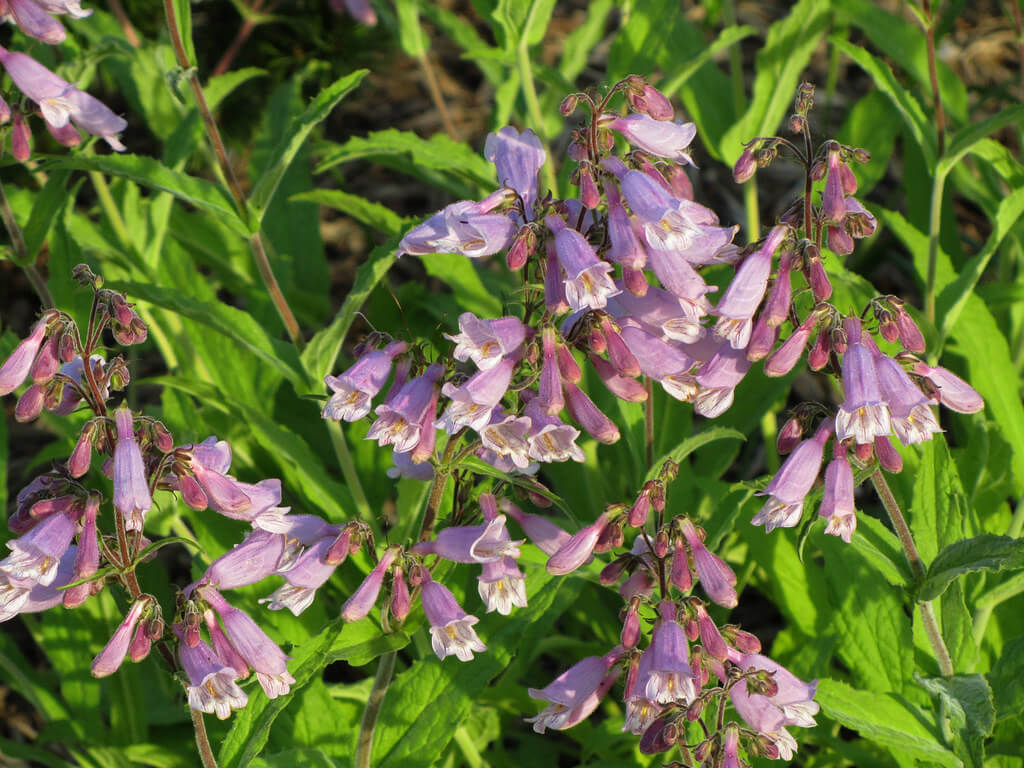 Katja Schulz / Flickr (Creative Commons)
Katja Schulz / Flickr (Creative Commons)- USDA Zone: 3-9
- Bloom time: Early summer
Also called the Beardtongue flower, Penstemon is available in several hues of red to pink. Requiring full sun to partial shade and well-drained soil, Penstemon is drought tolerant, though regular watering helps establish hardier blooms.
Lupine
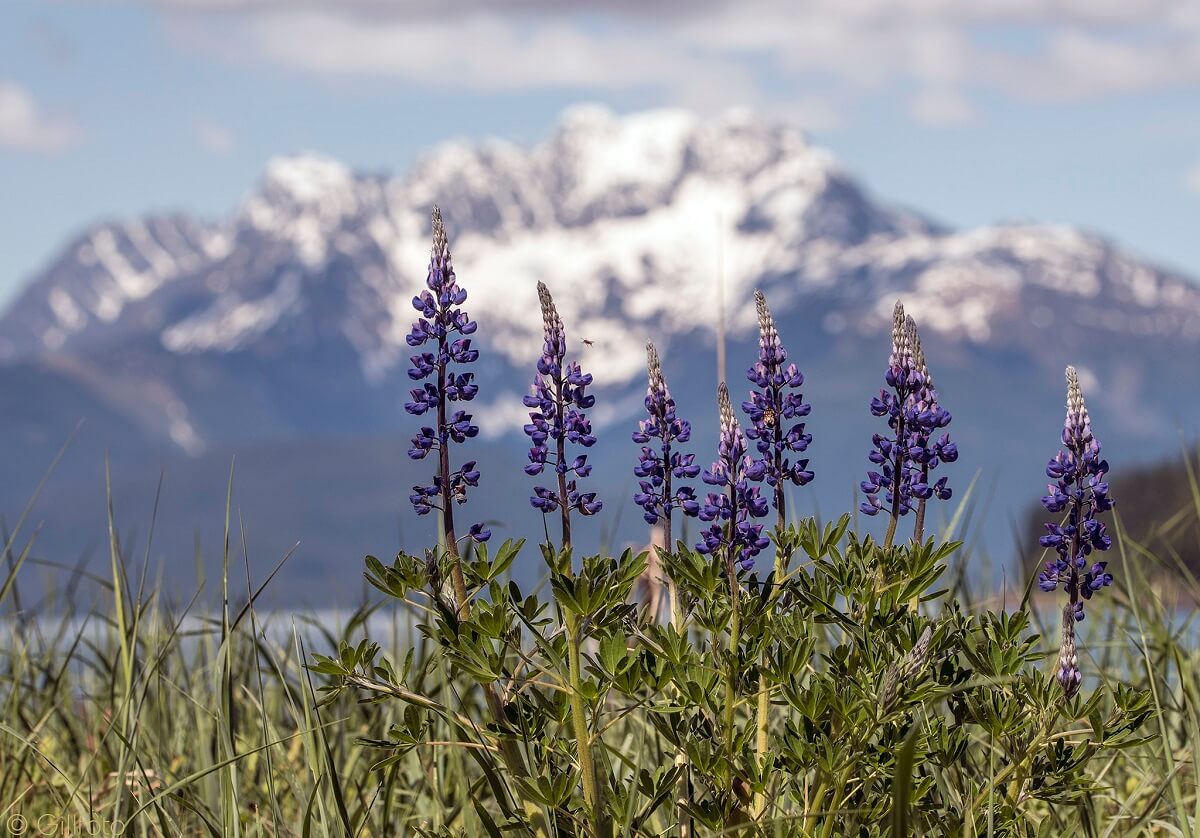 Gillfoto / Flickr (Creative Commons)
Gillfoto / Flickr (Creative Commons)- USDA Zone: 4-9
- Bloom time: Depends on variety, late spring to mid-summer in most cases
Tall spiky flowers well-liked by hummingbirds, Lupine is available in a variety of hues. Lupine tolerates partial shade, prefers well-draining soil, and needs regular watering until the plant is established.
Mahonia
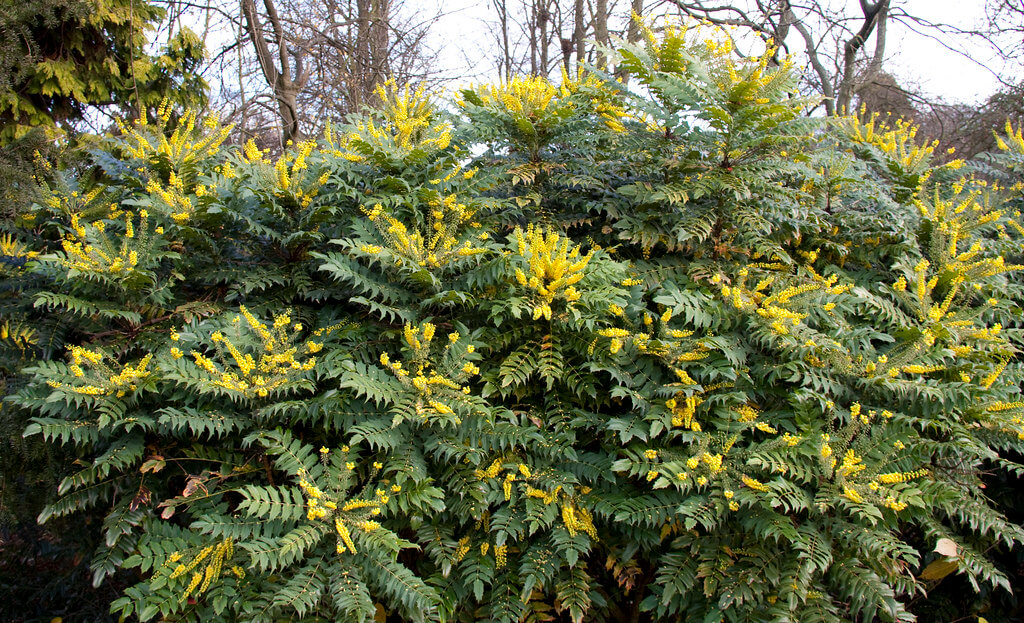 Tony Hisgett / Flickr (Creative Commons)
Tony Hisgett / Flickr (Creative Commons)- USDA Zone: 7-9
- Bloom time: Winter
Asian shrubs that flower in the winter and feature yellow-hued flowers shaped perfectly for hummingbirds. Mahonia prefers full sun to partial shade and can tolerate a number of soil types, but it does best with well-drained soil. Once established, Mahonia is drought-tolerant.
Trumpet Vine
 David Prasad / Flickr (Creative Commons)
David Prasad / Flickr (Creative Commons)- USDA Zone: 4-9
- Bloom time: Midsummer to September
Trumpet vine can tolerate partial shade, though it does best in full sun. Water only when necessary, and plant Trumpet vine in any kind of soil. The tubular, red blooms on this perennial plant are sure to encourage hummingbirds to stop for a sweet treat.
Cleome
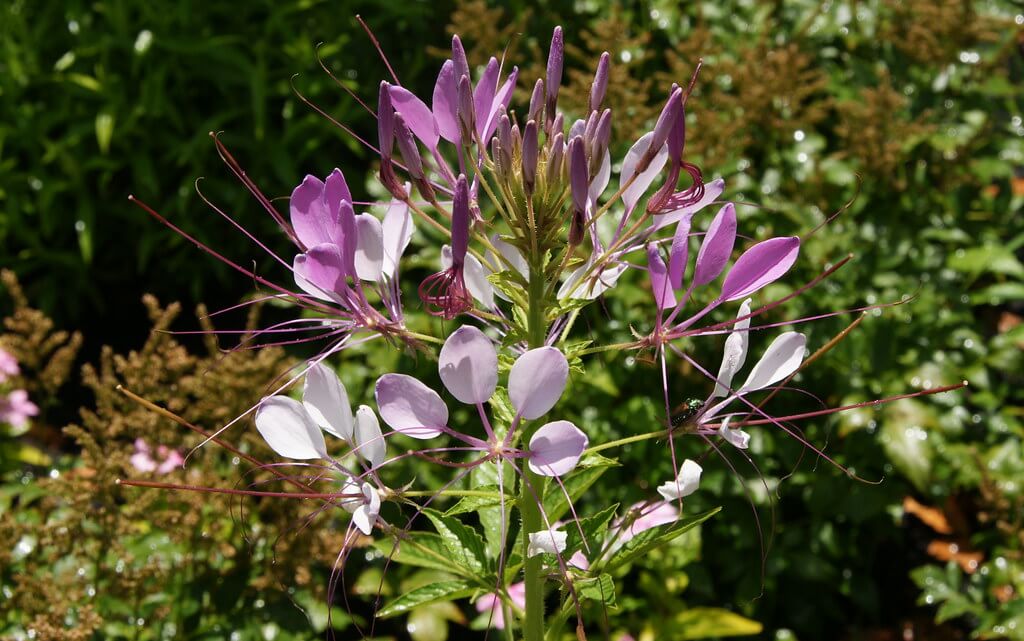 romana klee / Flickr (Creative Commons)
romana klee / Flickr (Creative Commons)- USDA Zone: 10-11
- Bloom time: Summer
Also known as spider flowers, these popular plants have pretty flowers and attractive foliage.
Related Post: Homestead Stories: The Spider Flower
Grow Cleome in full sun to partial shade and well-drained soil. Cleome is drought-tolerant, and just rainfall is enough to keep this flower watered.
Scarlet Runner Beans
 karen_hine / Flickr (Creative Commons)
karen_hine / Flickr (Creative Commons)- USDA Zone: 7-11
- Bloom time: Until plant is exposed to frost
An edible with beautiful red blooms, I’d probably plant these even if they didn’t also provide food — the beans are a nice bonus, though! Scarlet runner beans require regular water, fertile soil, and full sun.
Foxglove
 Leigha Staffenhagen / Insteading
Leigha Staffenhagen / Insteading- USDA Zone: 4-10
- Bloom time: Early summer
Another plant with tubular flowers ideal for feasting hummingbirds, Foxglove prefers well-draining, loamy soil and is grown in full sun to partial shade. Foxglove can be grown in moist soil, though it must be well draining to prevent root rot. Watch out! They’re poisonous.
Morning Glory
 Emily-Jane Hills-Orford / Insteading
Emily-Jane Hills-Orford / Insteading- USDA Zone: Depends on variety
- Bloom time: Depends on variety
A vining flower that climbs readily, Morning Glory requires full sun and well-draining soil and needs regular watering. The most popular variety produces blue flowers, but it’s also available in other hues. Bell-shaped blooms provide easy access for hummingbirds.
A Bit About Hummingbirds
Native to the Americas, most hummingbirds measure a maximum of 5 inches in length. These tiniest creatures of the bird world are named for the humming sound they emit when beating their wings at incredibly fast speeds. Despite their size, they have a rapid metabolism and the ability to fall into a hibernation-type state that reduces the need for sustenance.
Still, hummingbirds have a hearty appetite and need plenty of food to survive. While they eat many insects, they also consume nectar to keep up with their high energy expenditure. Nectar mainly provides nutrients in the form of carbohydrates, so hummingbirds snack on insects to round out their diets.
Without enough food sources, hummingbirds may quickly succumb to starvation. Anyone who has ever kept a bird as a pet is well aware of the fact that providing a steady supply of food is crucial. Birds are more likely to die of starvation than a lack of water.
Hummingbirds eat nectar using their unique physiology. They have long tongues with tubes to help facilitate nectar foraging.
What Do Hummingbirds Look for in a Flower?
When hummingbirds are out and about seeking nectar, their main goal is to find the flowers with the most (and sweetest) nectar.
Hummingbirds are attracted to bright flowers, and in particular pay attention to red-colored blooms. Vibrant colors attract these tiny, fast flappers, but red is the most attractive color to hummingbirds. They do not see colors like blue as brightly as reddish hues.
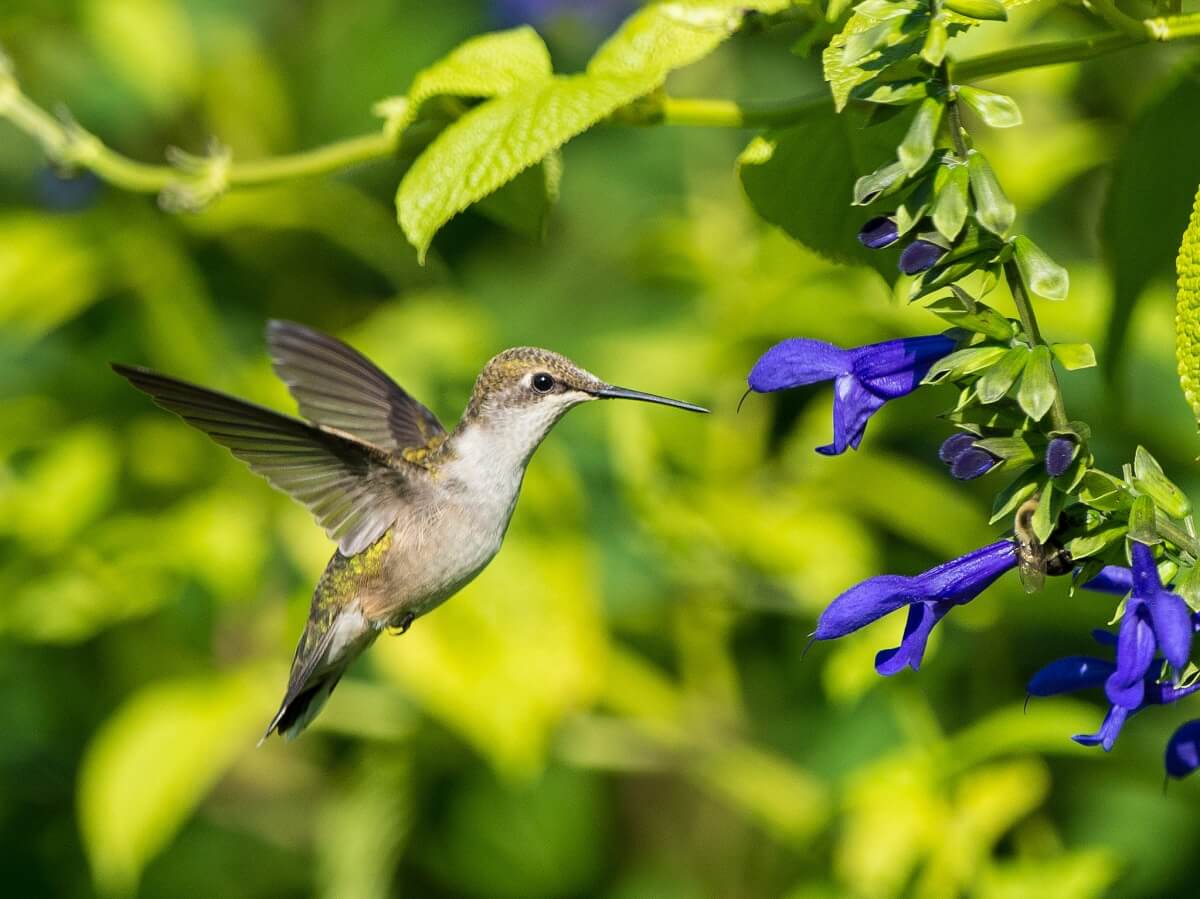 DC Gardens / Flickr (Creative Commons)
DC Gardens / Flickr (Creative Commons)Overall, however, studies have shown that hummingbirds are more concerned with nectar quality and supply. Research shows that hummingbirds consistently choose flowers with high-quality and large quantities of nectar — even if the flowers don’t fall within their color preferences.
Other features that may attract hummingbirds include:
- Flowers with a tubular shape that make it easier to get to the nectar.
- A long bloom time which represents a persistent food source.
Why Are Flowers Important for Hummingbirds?
Flowers are essential to hummingbirds because they represent a critical food source.
Hummingbirds also substitute their diets with insects. Hummingbirds may also drink from human erected feeders. Feeders are fine in most cases, but there are concerns that hummingbirds used to feeders may ignore nearby flowers and reduce instances of pollination. Another downside of using feeders is that they attract other critters. Pests may infiltrate the feeders, and beneficial insects may crawl in and die.
If you put up a feeder, make sure to keep it up until late fall to ensure hummingbirds have a nutrition source on their way south.


 1 year ago
264
1 year ago
264









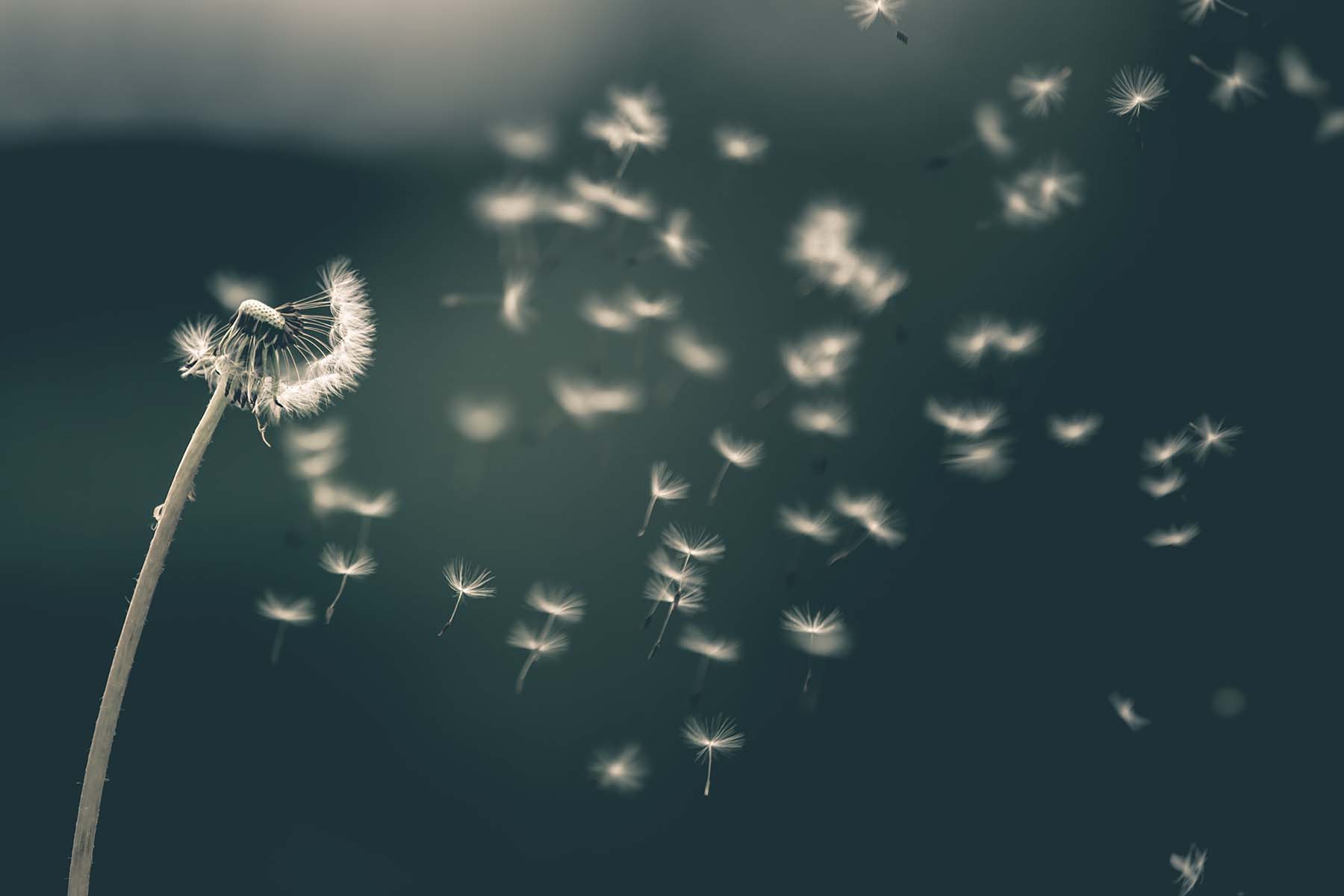





 English (US) ·
English (US) ·  French (CA) ·
French (CA) ·